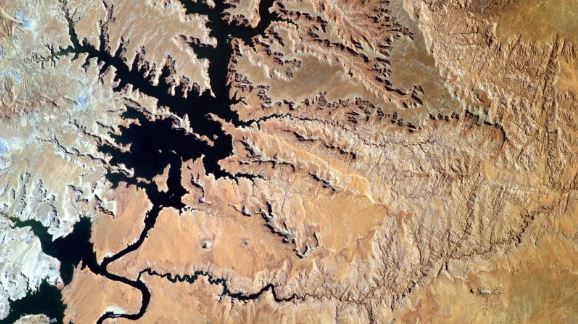
Jan. 31 (UPI) — Six Western states along the Colorado River, including Utah, have reached a tentative agreement to cut back on shared water use from the river’s two major dams, but California — which receives the lion’s share of water from the basin — did not sign on with the deal.
After years of tough negotiations, the proposed effort to slash usage was put forth by lawmakers from Arizona, Colorado, Nevada, New Mexico, Utah and Wyoming, who have previously expressed deep concerns about the continued viability of Glen Canyon Dam at Lake Powell and Hoover Dam at Lake Mead — due to increasingly reduced water flow and after both lakes reached record lows last year.
The states also faced increased pressure from Washington to decrease water use from the Colorado River by as much as 30% this year, with a deadline to deliver a proposal set for Tuesday.
On Monday, the states sent the proposed framework to the Biden administration, outlining new ways to reduce water releases from both reservoirs, patch up the river’s crumbling infrastructure, improve water levels, and increase power generation throughout the region.
The proposal by the states would presumably shore up both Glen Canyon and Hoover dams, saving millions of gallons of water per year across all the states, but especially so in the lower basin of Arizona, California, and Nevada.

For many decades, water use from the once-mighty Colorado River has been dictated by an agreement between the basin states, however, increased drought and allocation levels have caused more water to flow out of the tributary than come through it.
Most notably, California was poised to remain on the sideline of the latest action, with the state’s Colorado River Board planning to submit its own proposal for water use reductions over the next three years, according to officials.
JB Hamby, who serves as the state’s Colorado River commissioner, also questioned whether the six-state plan was even legal.
“At this time, the modeling proposal submitted by the six other basin states is inconsistent with the Law of the River and does not form a seven-state consensus approach,” he said in a statement.
Colorado Sen. Michael Bennet called California’s decision not to join in on the deal “deeply disappointing” in a statement Monday as he called on the Interior Department to enact the six-state proposal.
“We are facing the most serious drought in 1,200 years. California must step forward and be part of the solution. For too long, the other six states, and particularly the Upper Basin, have carried the burden of this historic drought,” said Bennet.
In June, Bureau of Reclamation Commissioner Camille Calimlim Touton informed the affected states that water use would need to be cut by as much as 4 million acre-feet per year to keep both lakes Mead and Powell from bottoming out, which would threaten the water supply to an unfathomable number of homes and businesses across the West.
Representatives with the unified states said they were confident in taking action now.
“This modeling proposal is a key step in the ongoing dialogue among the Seven Basin States as we continue to seek a collaborative solution to stabilize the Colorado River system,” said a statement from Tom Buschatzke, who serves as director of the Arizona Department of Water Resources.
Others in the collective backed up those sentiments.
“While our goal remains achieving a seven-state agreement, developing and submitting this consensus-based alternative is a positive step forward in a multi-phased environmental review process critical to protecting the Colorado River system,” said John Entsminger, who is general manager of the Southern Nevada Water Authority.
In December, federal officials and Arizona Sen. Mark Kelly urged Western states to reach the water-sharing agreement amid a historic “megadrought” along the river.
Dwindling water supplies led the Bureau of Reclamation to retain 480,000 acre-feet of water in Lake Powell in 2022. Officials warn that low water levels in Lake Powell and Lake Mead could soon reach critical levels. The reservoirs could need to be completely emptied by 2024 if nothing is done.
Declining water levels due to climate change and 20 years of ongoing drought have reshaped Lake Mead’s shoreline. In 2021, Lake Mead dipped at least 26 feet and was only 19% of full capacity in late 2022 — well below the federal government’s predicted water level that would trigger the most severe water cuts for the Southwest.





